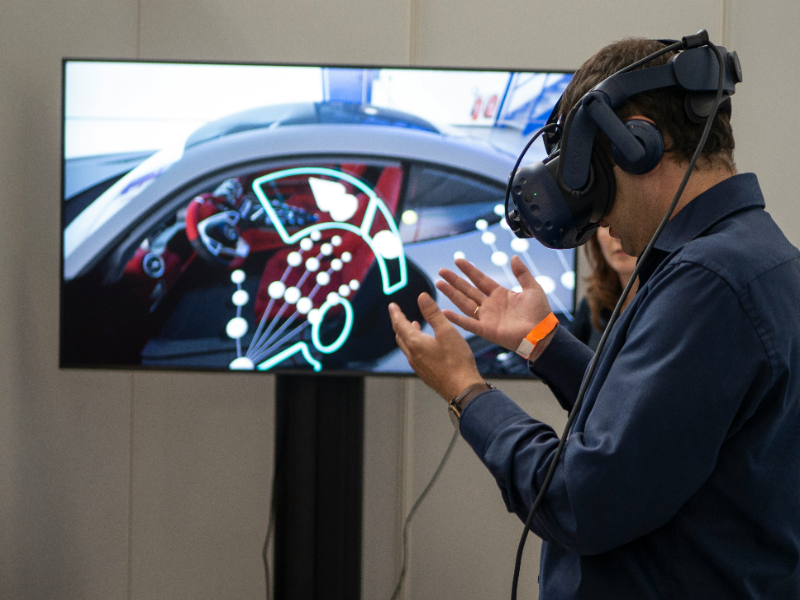- Mixed reality (MR) merges physical and digital elements, allowing users to interact with both real and virtual worlds seamlessly. This emerging technology is gaining traction across industries such as gaming, healthcare, and education.
- Unlike VR and AR, MR’s key features combines real and virtual objects to create interactive experiences, making it a powerful tool for real-time training, collaboration, and immersive learning.
As technology advances, the lines between our physical world and digital environments continue to blur. Mixed reality (MR) is an innovative technology that combines real and virtual worlds, allowing for unique, interactive experiences that extend beyond what either virtual reality (VR) or augmented reality (AR) can offer alone. By merging these environments, mixed reality’s key features enables users to interact seamlessly with both physical and digital elements, creating immersive experiences that are transforming industries from entertainment to education. But what is mixed reality And how does it differ from other immersive technologies? Let’s dive into its key features and explore its potential to reshape how we interact with the world.
Also read: Differences between mixed reality and virtual reality
Also read: Meta’s Puffin glasses aim to redefine mixed reality
Defining mixed reality and its key features
Mixed reality refers to a hybrid experience that combines aspects of both VR and AR to create an environment where digital and physical objects interact in real time. Unlike VR, which fully immerses users in a digital world, or AR, which overlays digital information on top of the physical world, mixed reality blends these elements, allowing users to interact with digital content in a way that feels more integrated and natural.
Key features of MR include spatial mapping, real-time tracking, and the ability to recognize and respond to physical objects and environments.
These features make MR an ideal choice for applications where interaction between virtual and physical objects is essential, from gaming to industrial training.
How mixed reality differs from VR and AR
To understand what is mixed reality, it’s essential to know how it contrasts with virtual reality and augmented reality.
While VR immerses users in a completely digital environment, cutting off their awareness of the physical world, AR allows users to see the physical world with digital elements overlaid on top.
Mixed reality, on the other hand, merges these two approaches by allowing digital and physical elements to interact seamlessly. In MR, a user might see a digital character sitting on a real-world couch or interact with virtual tools that respond to real-world gestures. This blending of virtual and real elements creates a more immersive and interactive experience that offers the best of both VR and AR.
Applications of mixed reality in real-world scenarios
Mixed reality is revolutionizing a wide range of industries by enabling experiences that were once considered futuristic. In gaming, MR creates interactive worlds where players can interact with both virtual and real objects, leading to a more engaging experience. In healthcare, MR is used for simulations and training, allowing medical professionals to practice surgeries or procedures on virtual patients that respond to real-world inputs.
Education is another sector benefitting from MR; students can explore complex subjects, such as anatomy or history, through interactive, 3D models that they can manipulate in real-time.
With its versatile applications, MR is also making waves in fields like manufacturing, retail, and remote collaboration, showcasing its potential to impact how we work, play, and learn.
In summary, what is mixed reality? It’s a groundbreaking technology that bridges the gap between physical and digital worlds, offering new ways to interact with virtual content in real-life settings. By merging the strengths of VR and AR, MR is transforming industries and enabling experiences that feel both immersive and practical. As MR technology continues to evolve, its applications will likely expand, providing more opportunities to blend the digital and physical worlds in ways we’ve only just begun to imagine.

